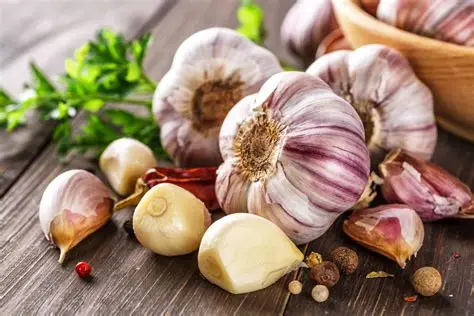Review article
, , ,
https://doi.org/10.1016/j.biomed.2011.12.002
Abstract
Recent years have seen an increasing emphasis on foods and food components in disease prevention. Garlic (Allium sativum L.), one of the best-researched herbal remedies, holds a unique position in history, traditionally employed to treat infection, colds, diabetes, heart disease, and a host of other disorders. Clinically, it has been evaluated for lowering blood pressure, cholesterol, and glucose concentration, as well as for the prevention of arteriosclerosis and cancer. Epidemiologically, garlic consumption inversely correlates with the risk of oral, stomach, esophageal, colon, and prostate cancers. In addition, the biological activities of garlic, including antibacterial, antithrombotic, antioxidant, immunomodulatory, and antidiabetic actions and modulation of drug metabolism, have been extensively investigated. Here, we briefly summarize the recent findings on garlic and its sulfur-containing compounds in preventing cardiovascular diseases and cancer, along with its modulation of drug-metabolizing enzymes and membrane transporter activities. Finally, garlic safety and drug interaction are discussed.
Section snippets
Chemicals and bioactive components of garlic
The unique flavor and health-promoting functions of garlic are generally attributed to its rich content of sulfur-containing compounds, i.e., alliin, γ-glutamylcysteine, and their derivatives. Processing a fresh and intact garlic bulb by crushing, grinding, or cutting induces the release of the vacuolar enzyme alliinase, which very quickly catalyzes alliin to allicin [1], [2]. Allicin is, however, a very unstable compound, soon rearranged and transformed into numerous lipid-soluble
Garlic preparations and supplements
Because of the complex chemistry of garlic, variations in processing methods can yield quite different preparations. Raw garlic homogenate, the major preparation of garlic, is the most common form of garlic consumed, and allicin the main compound present in fresh raw garlic homogenate. There are currently many garlic supplements on the market, garlic oil, powder, and aged extract being the most popular.
Garlic oil is mostly obtained by steam distillation, with a yield around 2.5–3.0 g/kg fresh
Garlic and cardiovascular disorders
Cardiovascular disease is a common human chronic disease, and it is the leading cause of morbidity and mortality in the USA [10]. The etiology of cardiovascular disorders is multifactorial, with, for example, hypercholesterolemia, hypertension, diabetes mellitus, heredity, hyperhomocysteinemia, increase in oxidative damage, and smoking as well-demonstrated risk factors [11].
Due to the accompanying inflammation in the plaque, cardiovascular disorders are regarded as chronic inflammation-related
Garlic and cancer
The past few decades have seen many epidemiological studies on the correlation between garlic consumption and incidence of cancer, from which an inverse relationship has emerged. Setiawan et al observed a negative dose–response relationship between the monthly intake of garlic and the risk of stomach cancer in Shanghai and Qingdao, China [50]. A recent study found an odds ratios among individuals with a high versus a low intake of garlic and onions that correlated with a starkly reduced risk of
Garlic and the detoxification system
The cancer-chemopreventive effect of garlic organosulfur compounds is believed to be associated with the modulation of carcinogen metabolism, including effects on phase I and II detoxification enzymes. Phase I enzymes, mainly cytochrome P450 (CYP), detoxify a variety of endogenous and exogenous chemicals and activate many carcinogens [97]. Phase II enzymes catalyze the conjugation of phase I metabolites to various water-soluble molecules, such as glutathione (GSH), glucuronic acid, or sulfate,
Garlic and antioxidation
Oxidative stress is a state wherein the balance between radicals generated and the free radical- or oxidant-scavenging capacity of the endogenous antioxidant system is disrupted. Oxidative stress is documented as being involved in the pathogenesis of chronic diseases, including cardiovascular disorders and cancer. Hence, compounds with antioxidant properties may be used to prevent oxidative stress-mediated diseases [127].
Numerous studies have demonstrated garlic and its organosulfur compounds
Garlic and drug interaction
As stated above, garlic definitely modulates drug-metabolizing enzyme activity and membrane transporter levels in the liver, lung, kidney, and intestinal tissues. This raises some possibility that garlic supplementation could cause interactions between food and drugs and change the therapeutic efficacy of any drugs administered. To resolve this question, in vitro and in vivo experiments have multiplied in recent years. Increased toxicity of the human immunodeficiency virus protease inhibitor
Safety of garlic
Consumed for hundreds of years, garlic is regarded as a safe food. However, in addition to the possible interaction with drugs cited above, several health risks have been reported to be associated with the excess consumption of garlic, or with contact with garlic it in the workplace. In particular, gastrointestinal tract injury and allergic reactions caused by garlic attract concern. Increased exfoliation of the gastric surface epithelial cells in healthy subjects has been reported after the
Conclusions
Past decades have seen myriad studies, especially in vitro and in animal models, addressing the protective effect of garlic against cardiovascular disease and cancer. This protection can arise from its diverse biological activities: enhanced antioxidant defense, lowering of blood lipids, inhibition of blood aggregation, enhancement of cancer cell cycle arrest/apoptosis, inhibition of invasion and/or metastasis, and modulation of drug metabolism and/or the immune response. However, the results
Acknowledgments
This research was supported by China Medical University, Grant No. CMU97-134 and CMU98-CT-21.

